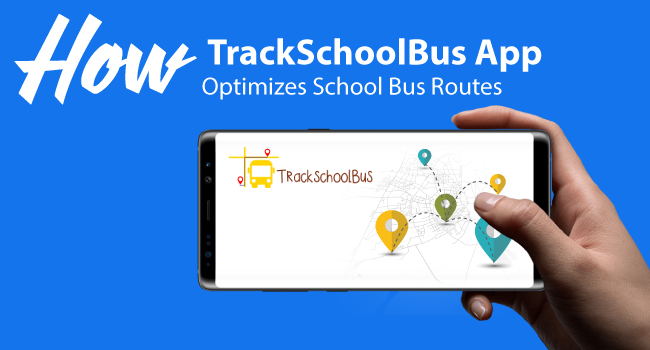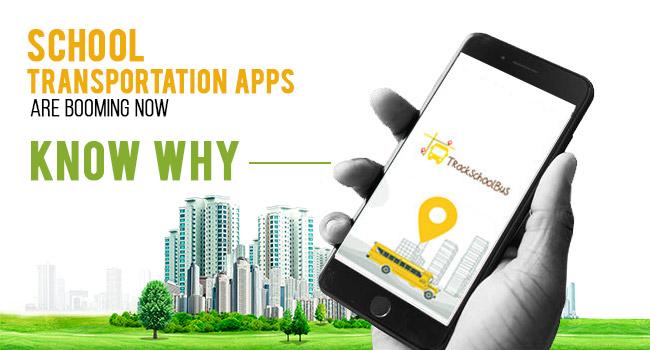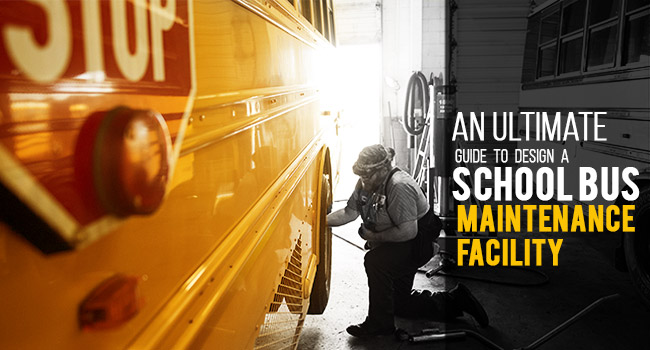School bus tracking systems make use of GPS, RFID, mobile apps, and Internet technologies. In fact, tracker apps are also very helpful in reducing not only the anxiety of parents but also that of the school authorities.
As such, it is important that concerned authorities install a school bus app to primarily ensure the safety of children and peace of mind for parents. Of course, the security and privacy norms have to be strictly adhered to prevent misuse or breach of data.
There are a number of school bus tracking apps that enable school administrators and parents to be continuously updated on the whereabouts of the children. In this post we have listed the top 15 School bus tracking apps of 2019, they are
1. Track School Bus
An excellent app which enables communication between parents, administrators, and drivers, it has interesting features such as video surveillance and a fleet manager module.
This app stands out because it offers a lot of functions. It is priced much lower than that of competitor programs. The app offers access to the administrators, parents, fleet managers, drivers, and school administrators.
The track school bus app provides parents with more control as they can contact school authorities or the bus drivers to inform about the absence of their child.
They can also change the pick-up and drop off points at any time. Further, they can track attendance, timings, bus-stops, and speed of the bus.
The administrators can also communicate with drivers and parents as frequently as they want. They have access to the database that contains information such as students in each bus, route map with all stops, etc.
On the other hand, the school bus drivers have access to the modules that provide information such as students in each bus, bus stops in each route, the speed of the bus, and those that enable them to send/receive communications to and from parents.
The audio system installed in the bus can be linked to the app to make announcements. Moreover, video surveillance enables the driver to check student behavior in the bus.
Transport managers are also benefitted because of this app. It allows them to monitor all the buses in the fleet, re-organize routes, and be able to communicate with the drivers. In addition, they receive notifications regarding traffic congestions and accidents.
2. Buswhere
This school bus app is not only easy to set up but also to use. It automatically tracks the school buses when the routes are changed. The app provides parents with detailed information as regards the school bus and routes, all with the help of an interactive map.
Further, parents are alerted as the bus nears the stop. They are notified if there is a change in route or the time of arrival at the stop. This reliable app helps a great deal in reducing the workload of the school staff.
School and vehicle administrators are given access to the Fleet Map. This map gives the administrators detailed information about factors such as fuel levels, current speed and location, and the current route of the bus.
3. Treker
This app is designed to function like a communication tool that can be used by the driver of the bus, the parents and the school administrators. The parents get to know the time when the child is boarded or alighted from the bus, the time of departure of the bus and its arrival times.
The portal for school administrators helps them to track the bus location and view every bus stop on a map. They can send alerts to parents in case of emergencies. Drivers’ portal which contains student lists with all details.
The app provides a beacon for students using Bluetooth (BLE). This is useful in letting administrators, parents, and drivers know as to when a student enters or exits the bus.
The information transmitted to and from the beacon is secure and encrypted to prevent unauthorized persons from boarding the bus, ensuring high levels of security.
4. Here Comes The Bus
This is a very popular app when it comes to school bus location sharing. This platform has two main sections. The basic section gives information to parents about the bus location and actual time of its arrival or departure.
The second is the Student Ridership section which tracks whether the student is present inside the bus and the stop at which they entered/exited the bus. This is accomplished through RFID or barcode readers.
Students’ ID cards are scanned during boarding and descending. The GPS device pinpoints the exact location and notifies the school and parents in case of an anomaly.
5. Tripspark Education
This School Bus Transport Software package (K-12) is a school bus location sharing program. This software platform provides scheduling and routing solutions with the help of a calendar for better efficiency.
Another feature of this software is that it records student absence and accordingly suspends transportation for the period of absence. K-12 is programmed to treat students with special needs in a safe and careful manner and routes them so that they are required to spend only less time on the bus.
6. Ubica Bus
This application comes with an array of features that help parents track the school bus. They will be alerted at the time of pick-ups and drop-offs. School announcements are sent directly to parents.
GPS tracking, route optimization, distance, and time are some of the aspects that help school administrators to manage the fleet of buses they operate. Tracking of student attendance, driver timesheets, and video surveillance greatly help to reduce the man-hours required for school bus fleet management.
Another interesting feature offered by this app is that it allows a Wi-Fi router to be fitted to each school bus. The availability of the Internet while commuting in the school bus can be very exciting to the students and this can lead to more children opting to use the school buses.
7. School Bus Tracker
In addition to the main feature of providing real-time GPS location of buses, the app also serves as a tool to send children’s school reports to parents.
In addition, it allows parents to request last minute changes to the time of pick up and drop off. Drivers receive notification if the child is sick and can re-route the school along the way if required.
8. Trace School Bus
Trace School Bus has many different portals that can be used by the school, parents, and drivers. The platform for schools allows for comprehensive monitoring of the entire system and communication with the guardians.
Parents get real-time updates on bus locations and can know when a bus will arrive at the specified stop. The driver app helps to communicate with administrators and also gives them information about the routes
9. Bus Tracking System from Applane
This software package comes with a number of features. A powerful parent app provides the location of the bus, displays pick up and drop timings, and enables communication with the drivers.
This allows for picking up or dropping off a child at the next closest stop if required. Integration using RFID enables parents to track their wards’ attendance.
The CCTV integrated into the system helps to keep a check on student discipline and on driver behavior. Administrators receive notifications in emergency situations
10. Smart-School-Bus-Tracking from ADCC
This app offers real-time bus location features that help parents and forms a powerful communication platform for bus drivers.
Parents get to view the route being followed by the bus, driver details, starting time and ending time of trips, and vehicle speed, among other things.
The module meant for administrators can send automated alerts if the bus driver violates traffic rules.
The app enables all the buses of the fleet to be surveyed at all times and routes followed can be viewed using an interactive diagram.
Drivers receive detailed instructions for each and every route. Further, they can report student misbehavior by capturing live photographs and sending them directly to administrators
11. MyBusVue
The MyBusVue school bus tracking software offers features such as the real-time location of the bus just like other programs. However, it is a secure app wherein the parents have to register and create an account before logging in.
The Z-Pass rider scans and records as when a child gets on board and off the bus. In addition, the platform comes in web and mobile versions. For the school administrators, they have access to a broad variety of tools which helps them to monitor the buses and the students.
12. Transfinder
Transfinder comes with advanced tools and a wide range of features for tracking the school buses. The Routefinder Pro is a bus routing module that can be used by fleet managers and Infofinder empowers bus administrators to increase the operational efficiency.
They can manage the entire fleet, optimize routes, and perform the required analyses. This app focuses more on catering to the needs of both the transportation department and the school.
13. Seon
Seon is a web-based school bus routing application. School administrators can track buses and maintain existing routes efficiently. They can inform parents in the event of an emergency through push notifications. Parents can view the bus routes and timings.
The drivers receive instructions as regards directions and can communicate with school authorities at all times. As this app comes with Bus Camera systems capability, it helps drivers to identify misbehavior among students
14. Verstrans My Stop
The app Verstrans My Stop provides parents with features similar to other apps. It provides a clear idea about the current location of the school bus and the time of arrival at the stop.
The program functions to update bus locations once every five seconds. Parents also can use the web version of the app on their computers. School authorities can plan bus routes, optimize existing ones, and monitor routes and drivers.
15. SafeStop
The app SafeStop provides a set of common features that allow tracking of buses. The key function offered by the app is the real-time notifications to parents and schools. The app also comes with advanced analytics to optimize bus routes and create an efficient system.














